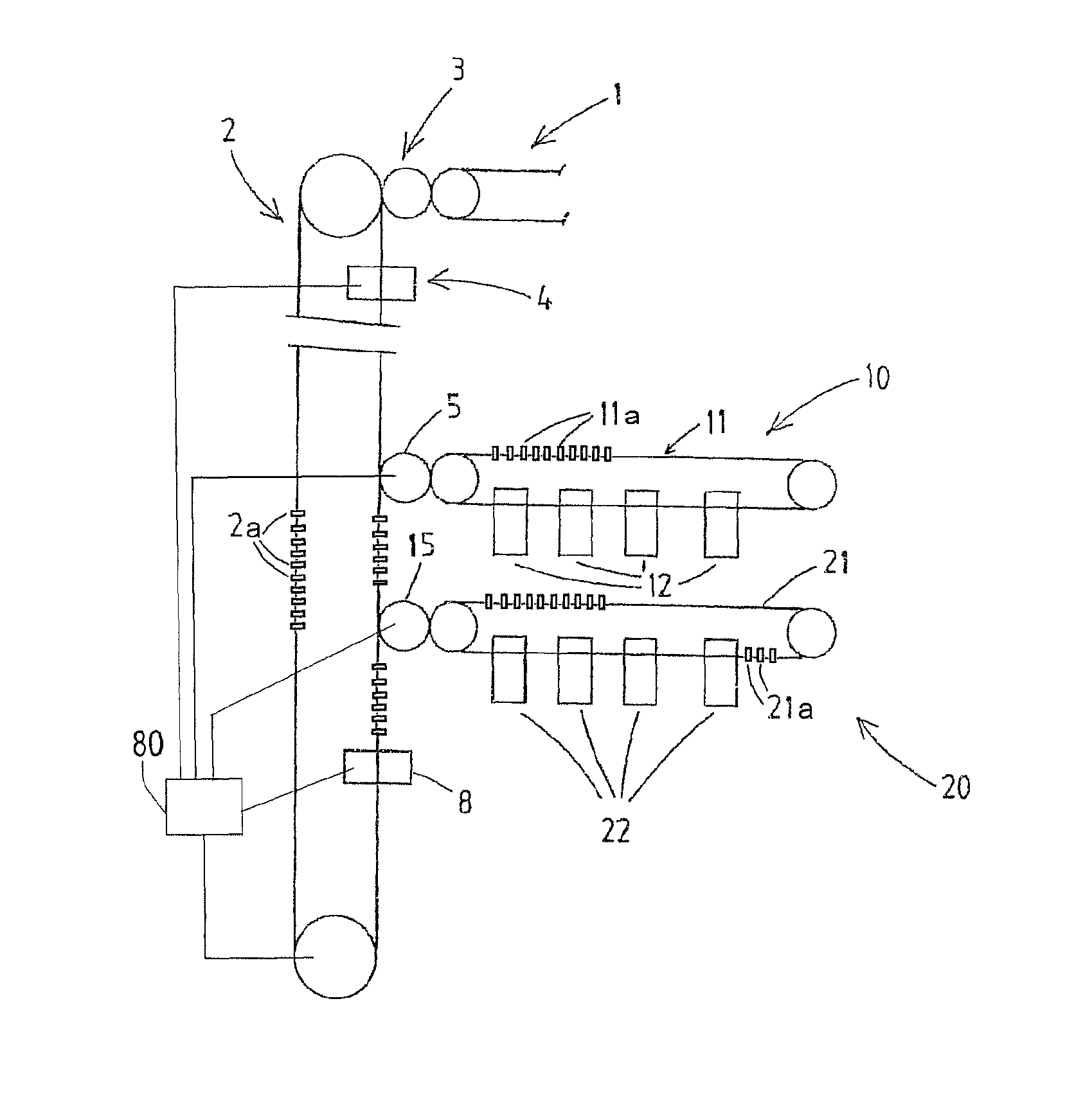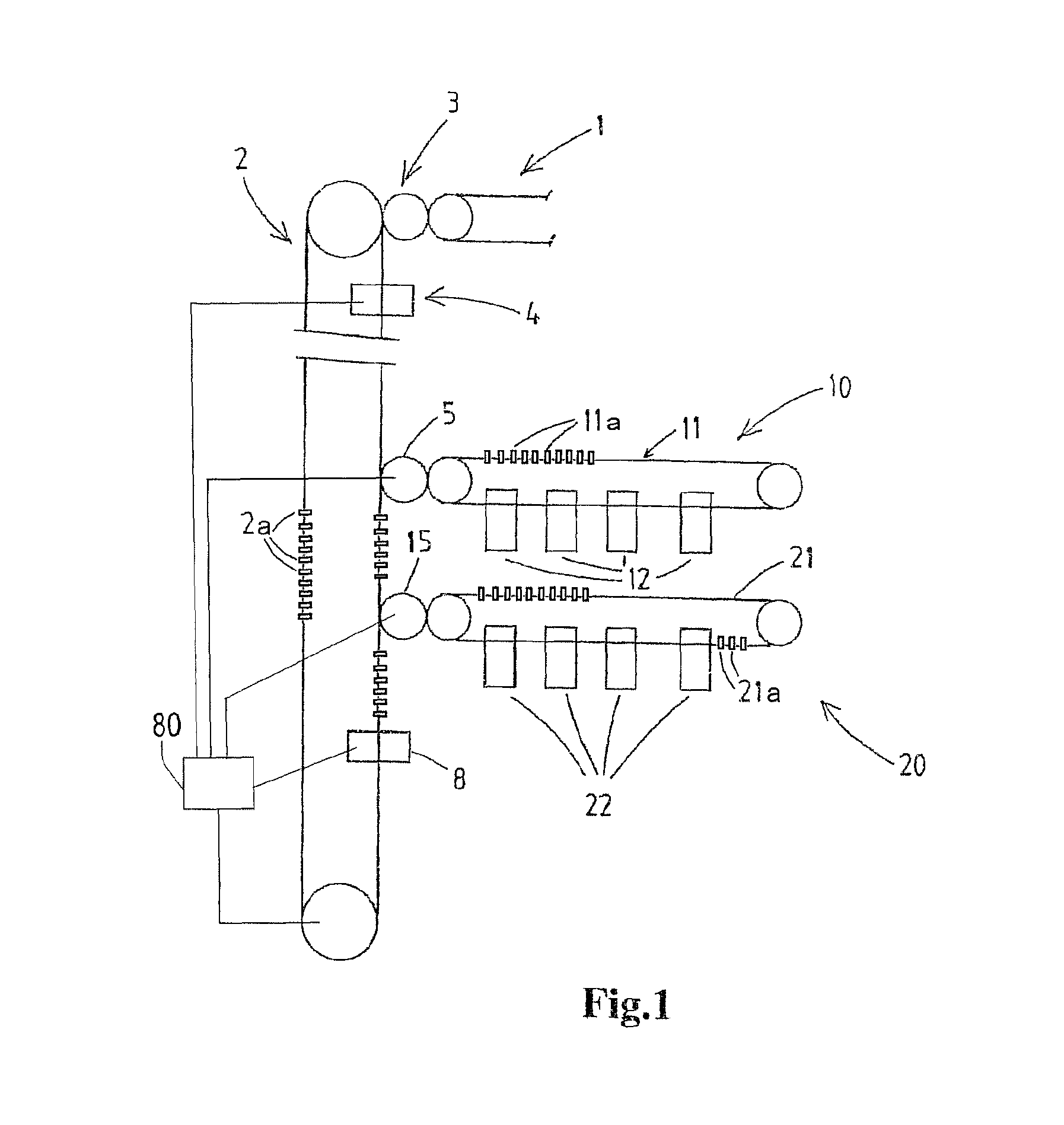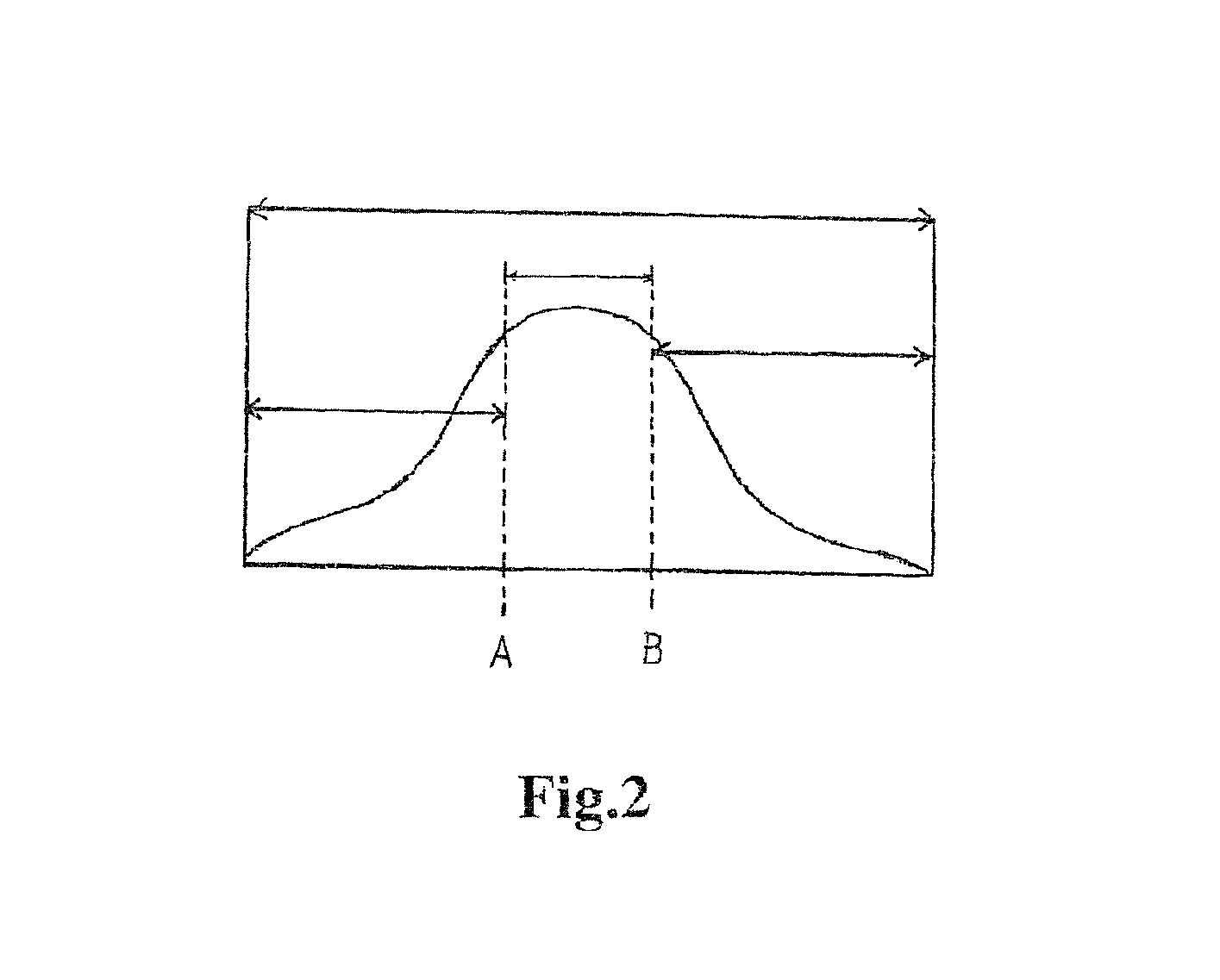Method and installation for processing slaughtered poultry
a technology for slaughtering poultry and installation, which is applied in the direction of poultry processing support devices, poultry transferring/transporting devices, dividing poultry, etc., can solve the problems of insufficient capacity of the combination of transfer devices, insufficient capacity of the transfer device, and insufficient cut-up lines
- Summary
- Abstract
- Description
- Claims
- Application Information
AI Technical Summary
Benefits of technology
Problems solved by technology
Method used
Image
Examples
Embodiment Construction
[0106]In FIG. 1 the reference numeral 1 indicates a conveyor for oven-ready carcasses of slaughtered poultry, e.g. chicken.
[0107]As is known in the art oven-ready poultry carcasses are carcasses from birds that have been killed, bleeded, defeathered, eviscerated, and chilled, commonly these steps, possibly with some additional steps as deheading, rinsing, etc., having been performed in upstream stations of the poultry processing plant.
[0108]The conveyor 1 may be an overhead conveyor with an endless track and carriers that are moved along said track, each feed conveyor carrier being adapted to support one carcass suspended from its legs.
[0109]The reference numeral 2 indicates a feed conveyor. This conveyor 2 has an endless track and carriers 2a that are moved along said track, the feed conveyor carrier 2a being adapted to support one carcass suspended from its legs. Only some carriers 2a are shown indicatively, commonly a multitude of carriers are present along the conveyor.
[0110]In ...
PUM
 Login to View More
Login to View More Abstract
Description
Claims
Application Information
 Login to View More
Login to View More - R&D
- Intellectual Property
- Life Sciences
- Materials
- Tech Scout
- Unparalleled Data Quality
- Higher Quality Content
- 60% Fewer Hallucinations
Browse by: Latest US Patents, China's latest patents, Technical Efficacy Thesaurus, Application Domain, Technology Topic, Popular Technical Reports.
© 2025 PatSnap. All rights reserved.Legal|Privacy policy|Modern Slavery Act Transparency Statement|Sitemap|About US| Contact US: help@patsnap.com



